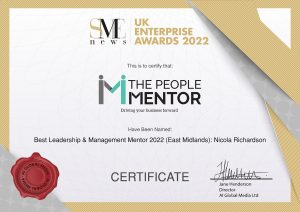Imagine the scene. You’re sitting with an employee and you’re about to give them a performance review. What do you focus on? Do you mainly focus on where they’re performing well or is your focus on how they can do better?
Many managers focus on fixing problems rather than helping employees find ways to do what they do best, and it’s limiting the capacity of their organisations to improve.
A recent poll of over 1000 employees in the US found that managers are focusing on the wrong things when they speak to employees, yet it’s the employees that are taking it upon themselves to own their strengths, their attitude, and their personal development. They are recognising their own strengths, even if their managers aren’t.
A decade ago, it was estimated that only one-third of employees could name their strengths, whereas today, 56% of employees can list their top five strengths. Playing to these strengths and doing what they do best has made them flourish, and 78% of employees report feeling more engaged and appreciated in their job roles.

For many managers, improving employee engagement and giving them a sense of purpose and wellbeing can seem like an impossible task, when really, all that’s needed is to change the discussion they’re having with employees, and with themselves.
Most managers tell employees they’re doing okay, highlight where there’s room for improvement, or even give no feedback at all. This is despite the findings from Gallup research, that employees who feel ignored by their managers are more likely to be disengaged at work, and the link between focusing on weaknesses and reduced employee performance as shown in other data from sources like CEB.
But we can’t point the finger of blame solely at managers for focusing on weaknesses.
The fact is, our brains are inherently wired to look for weaknesses rather than strengths. Research has shown that we spend as much as 80% of our time focusing on weaknesses and only 20% looking at strengths. Add to this the fact that managers aren’t necessarily trained to have strength-based conversations and you’ll see why the strengths versus weaknesses issue do not really get addressed.
So what can managers do to change the conversation they’re having with employees?
To be able to focus on strengths, you have to be able to notice them in the first place, so a key thing that managers can do is notice when employees are enjoying their work or being creative and tenacious. Then managers can give employees opportunities to play to their strengths every day within their job role.

Every employee wants to feel valued and appreciated, so offering strength-based feedback is another key thing that managers can do. As well as thanking an employee for their hard work, tell them exactly why they did a good job- what strengths were they displaying at the time?
Remember too that while strength-based approaches can work well, if employees are encouraged to use their strengths and then they experience failure, they can feel disappointed and disengaged. The role of the manager is to reframe setbacks so that failure is seen as inevitable sometimes and something that can be learned from.
In business, it can often feel like we are constantly fighting fires, and it’s all about problems. It’s great when we’re dealing with problems we can solve, but what about when we get stuck and can’t find a solution? That is when organisational strength comes into play as well as the strength of individuals. When you feel stuck, remember what you do well as an organisation and draw on that to help you find ways to move forward.
The strength of an organisation is equal to the strength of all of its parts, and if an organisation can honestly say that it recognises and appreciate employees, helps people identify their strengths, celebrates successes and allows for failure, then it becomes much stronger, more productive and more successful as a result.
How much better would your organisation perform if your conversations focused on strengths?
Want help in this area, then my leadership mentoring can take you through how to apply this with your team.
Want to read more about using a strengths-based approach then this blog will share more tips.






